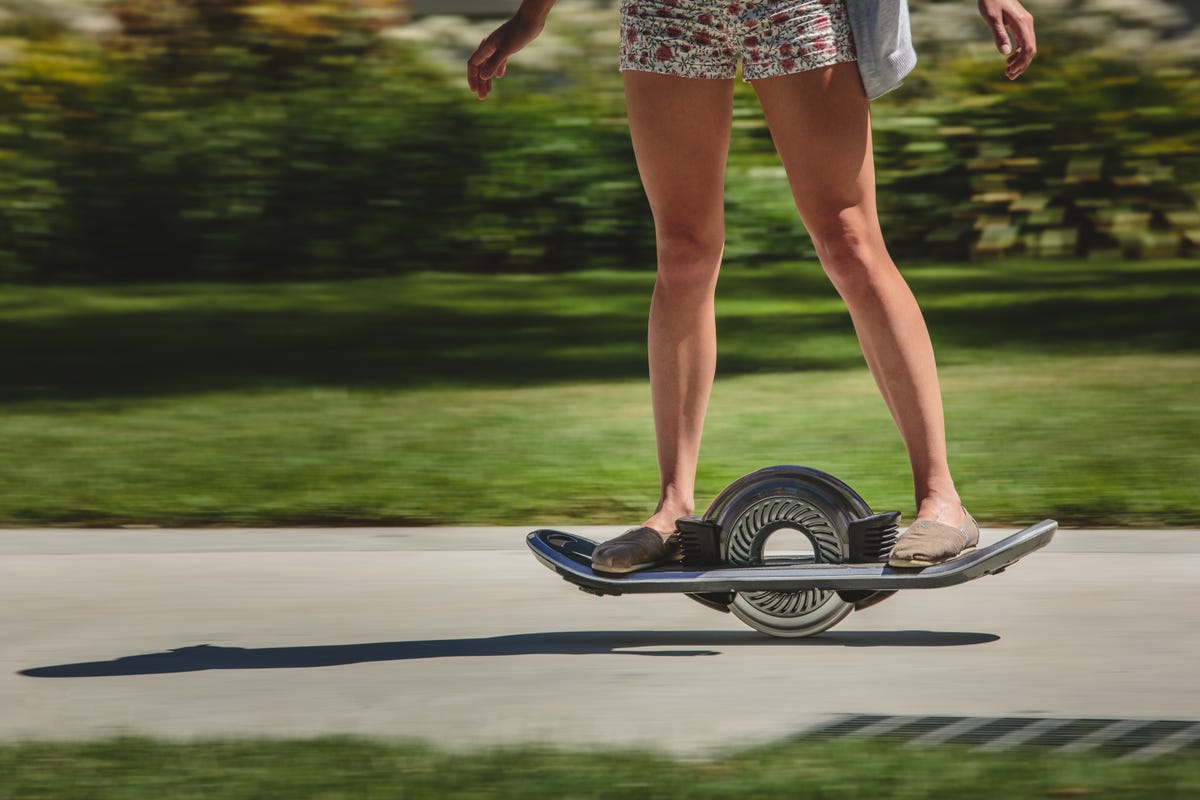Ever since Marty McFly zipped around the silver screen on a hoverboard in 1989’s “Back to the Future II,” people have been fascinated by the idea of riding on a plank that levitates its user a few inches off the ground. Earlier this summer, carmaker Lexus announced that it had invented a hoverboard, and indeed it had. The only catch is that it can be used only in a magnet-filled custom skate park in Barcelona, Spain.
Now, a new “Hoverboard” is being announced, and this one you can ride anywhere. The catch is, even though the device claims the name of a levitating ride, it doesn’t actually float. It does, however, have only one wheel, and it looks like you’d have the sensation of floating while riding it. It seems kind of like a Segway without any handles.
The Hoverboard begins its fundraising campaign on Kickstarter Thursday, with the effort running until October 21 — the day McFly headed into the future and found his now iconic hoverboard.

Eugene Borodin
In the middle of the Hoverboard is a 10-inch-diameter wheel (25 centimeters) turned by an electric motor that can crank out up to 5,000 watts of power. The board will keep riders balanced front to back, but they have to learn to keep their balance side to side. Leaning forward makes the board start rolling and accelerating, while leaning back causes it to slow down and, eventually, go in reverse.
Related stories
- The Lexus hoverboard is real, but it isn’t coming to a skate park near you
- No hoverboard, no problem: Buy McFly’s skateboard instead
- Build a ‘Back to the Future’ hoverboard replica from everyday items
The device’s inventor said he came up with the board less as a skateboard substitute than a nod to another sport. “I dreamt of a personal electric vehicle that would produce the sensation of surfing on land,” Robert Bigler said in a press release.
The gizmo, which will weigh 25 pounds (11 kilograms), has onboard lights and speakers and “ground-detecting sonar to keep the Hoverboard parallel to the changing ground,” according to the release. It can travel 12 miles with the standard battery and over 20 with an extended battery and reach a top speed of 20 mph/32 kph. Charging time is 16 minutes with a “supercharger” or one hour with the standard charger.
Riding the skateboard of the future won’t be cheap. “I didn’t want to approach the first real Hoverboard from the standpoint of making it a price-product,” Bigler said. “I spared no expense to make it fully everything today’s technology could possibly provide.”
That means if you want one, you’ll have to fork over $3,775 (about £2,437, AU$5,243). Do so, and Bigler is saying your board will be delivered by May 2016. Of course, history has shown that the more complicated an item is, the more it will miss its anticipated delivery deadline on Kickstarter, so you might just have to go a bit more into the future till yours is in your hands.




